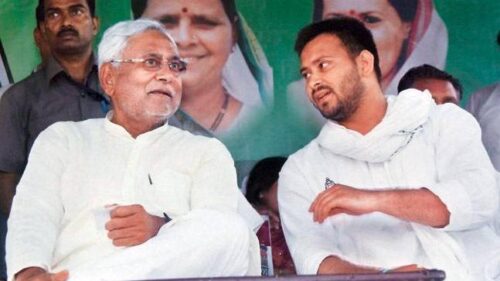Rama Krishna Sangem
Bihar’s first ever caste survey in recent times revealed that BCs – Extreme Backward Classes (EBCs) and Other Backward Classes (OBCs) – constitute 63 per cent of the state’s population of 13.07 crore. The impact of this survey is likely to be on the national level too, as most of the opposition parties, including Congress are now demanding caste be included in the coming census.
The Nitish Kumar government in Bihar on October 2, Monday released findings of its much-awaited caste survey, which revealed that OBCs and EBCs constitute a whopping 63 per cent of the state’s total population. These figures are in tune with the political philosophy of mandal parties which argue that as the OBCs account for a majority of population in India, they should get proportional representation in political power too.
According to the data released here by Development Commissioner Vivek Singh, the state’s total population stood at a little over 13.07 crore, out of which, the Extremely Backward Classes (36 per cent) were the largest social segment followed by the Other Backward Classes at 27.13 per cent.
The survey also stated that Yadavs, the OBC group to which Deputy Chief Minister Tejashwi Yadav belongs, were the largest in terms of population, accounting for 14.27 per cent of the total. Notably, the survey was ordered last year after the Narendra Modi government at the Centre made it clear that it would not be able to undertake a headcount of castes other than SCs and STs as part of the census.
SCs 19.65 per cent, STs 1.6 per cent
Bihar government unveiled the results of its comprehensive caste-based census, shedding light on the religious and caste demographics in the state. The data paints a vivid statistical picture of the diverse communities residing in Bihar.
In terms of religious affiliation, the majority of Bihar’s population adheres to Hinduism, accounting for 81.99% of the total populace. Muslims constitute a significant minority at 17.70%, while Christians, Sikhs, Buddhists, and Jains represent smaller religious segments, each with their own unique presence.
Further analysis reveals various social strata and opportunities available to different groups. The prominent categories include backward communities at 27%, extremely backward at 36%, scheduled caste at 19.65%, and scheduled tribe at 1.6%. These communities often confront additional challenges and discrimination compared to others. A fraction of the population, approximately 16%, falls under the unreserved category, not aligning with any of the aforementioned groups.
Brahmins, Bhuminars & Rajputs 9.28 per cent
Delving into caste dynamics, Bihar showcases a tapestry of identities. Notable castes include Yadavs at 14%, Brahmins at 3.6%, Rajputs at 3.4%, Kurmis at 2.8%, Kushwahas at 4.2%, Telis at 2.8%, and Bhumihars at 2.8%. Musahars, comprising a mere 3% of the population, represent one of the most economically disadvantaged and marginalized castes.
The comprehensive survey faced legal challenges and opposition from the BJP, but Chief Minister Nitish Kumar emphasized the importance of this report in steering the government’s developmental initiatives aimed at uplifting all sections of the society.
Background of caste census
The groundwork for this census was laid with a government notification on June 6, 2022. The initial phase commenced on January 7, 2023, concluding on January 21. During this phase, census workers diligently canvassed Bihar’s 38 districts, encompassing 534 blocks and 261 urban local bodies, meticulously numbering households and recording vital data.
Over the course of this phase, a staggering 2,58,90,497 households were accounted for, with information on the head of the family and the total number of inhabitants meticulously documented. The monumental effort engaged more than 5.18 lakh personnel, spearheading this historic caste census. In the populous Patna district alone, 14.35 lakh families underwent scrutiny, with any omissions to be rectified through the District Caste Enumeration Cell.
This comprehensive caste-based census promises to be a pivotal tool in shaping policies and initiatives to foster the holistic development of Bihar, addressing the unique needs and challenges of its diverse communities.


